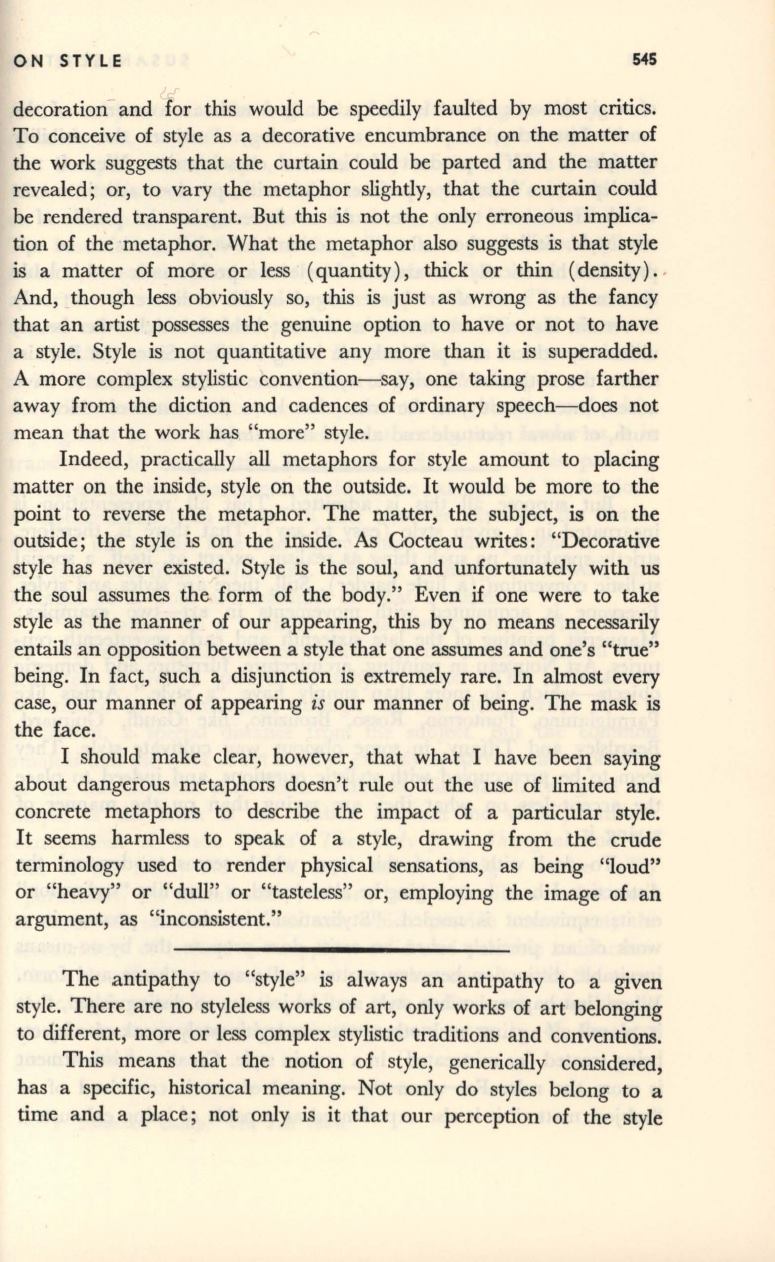
ON STYLE
54S
decoration and for this would be speedily faulted by most critics.
To conceive of style as a decorative encumbrance on the matter of
the work suggests that the curtain could be parted and the matter
revealed; or, to vary the metaphor slightly, that the curtain could
be rendered transparent. But this is not the only erroneous implica–
tion of the metaphor. What the metaphor also suggests is that style
is a matter of more or less (quantity), thick or thin (density) . '
And, though less obviously so, this is just as wrong as the fancy
that an artist possesses the genuine option to have or not to have
a style. Style is not quantitative any more than it is superadded.
A more complex stylistic convention-say, one taking prose farther
away from the diction and cadences of ordinary speech-does not
mean that the work has "more" style.
Indeed, practically all metaphors for style amount to placing
matter on the inside, style on the outside. It would be more to the
point to reverse the metaphor. The matter, the subject,
is
on the
outside; the style is on the inside.
As
Cocteau writes: "Decorative
style has never existed. Style is the soul, and unfortunately with us
the soul assumes the form of the body." Even
if
one were to take
style as the manner of our appearing, this by no means necessarily
entails an opposition between a style that one assumes and one's "true"
being. In fact, such a disjunction is extremely rare. In almost every
case, our manner of appearing
is
our manner of being. The mask is
the face.
I should make clear, however, that what I have been saying
about dangerous metaphors doesn't rule out the use of limited and
concrete metaphors to describe the impact of a particular style.
It
seems harmless to speak of a style, drawing from the crude
terminology used to render physical sensations, as being "loud"
or "heavy" or "dull" or "tasteless" or, employing the image of an
argument, as "inconsistent."
The antipathy to "style"
is
always an antipathy to a given
style. There are no styleless works of art, only works of art belonging
to different, more or less complex stylistic traditions and conventions.
This means that the notion of style, generically considered,
has a specific, historical meaning. Not only do styles belong to a
time and a place; not only is it that our perception of the style


